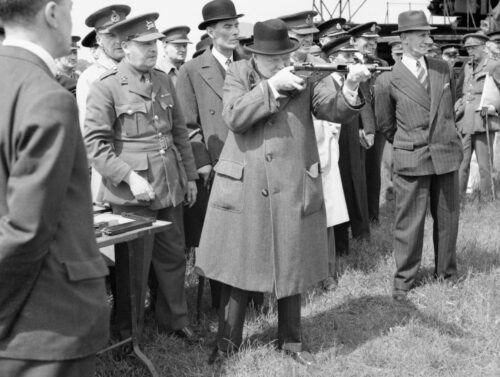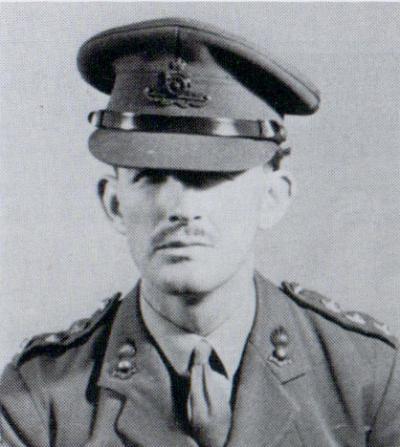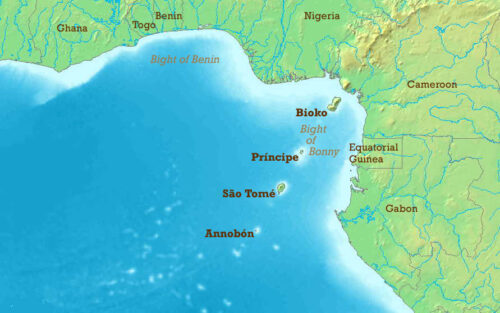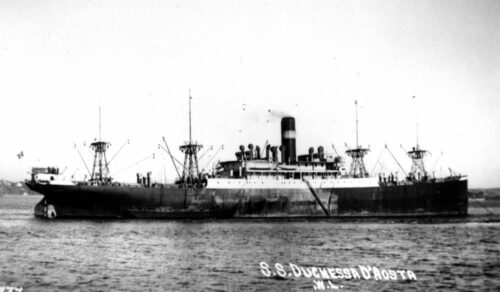Modern (2007) aerial view of Santa Isabel harbor where Operation POSTMASTER took place. Photo: Ipisking / CC BY-SA 3.0 DEED.
Operation POSTMASTER was a British special operation conducted on the Spanish island of Fernando Po, now known as Bioko, off West Africa in the Gulf of Guinea, during the Second World War. The mission was carried out by the Small Scale Raiding Force (SSRF) and the Special Operations Executive (SOE) in January 1942.
The Special Operations Executive (SOE)
The Special Operations Executive (SOE) was a clandestine British organization established during World War II. It was officially inaugurated on July 22, 1940, under the supervision of the Minister of Economic Warfare, Hugh Dalton. The formation of the SOE resulted from the consolidation of three pre-existing secret entities. The organization’s main objective was to carry out espionage, sabotage, and reconnaissance in territories occupied by the Axis powers in Europe and subsequently in Southeast Asia. In addition, the SOE provided support to local resistance movements. The organization was occasionally referred to as the “Baker Street Irregulars”, a nod to the location of its headquarters in London. It also earned the moniker “Ministry of Ungentlemanly Warfare”. The SOE had direct control or employment of over 13,000 individuals, of which approximately 3,200 were women. Following the conclusion of the war, the organization was officially disbanded on January 15, 1946.

Background
In 1941, the British Admiralty began to receive intelligence that German submarines were refueling in the rivers of Vichy French territories in Africa. The task of investigating these reports was assigned to the SSRF, also known as No. 62 Commando, a unit established in 1941. This unit, consisting of 55 commando-trained personnel, worked in collaboration with the Special Operations Executive (SOE).
Ian Fleming, who would later gain fame as the author of the James Bond series, was a key player in Operation POSTMASTER. Serving as the liaison officer between the Naval Intelligence Service, the Admiralty, and the SOE, Fleming worked hand in hand with the SOE’s leadership to ensure the operation’s success.
Fleming’s crucial contribution was in crafting the cover story that allowed the British Government to deny any involvement in the raid. This was of paramount importance as the operation took place in a neutral harbor, and any proof of British involvement could have led to significant political fallout.
Fleming’s experience with the SOE and his familiarity with the individuals who participated in Operation POSTMASTER are thought to have inspired his creation of the iconic character, James Bond. It is believed that he incorporated certain traits of the SOE members into the character of James Bond.
The Operation
In the summer of 1941, the Special Operations Executive (SOE) acquired a seemingly ordinary fifty-five-ton trawler, the Maid Honour. Despite its unassuming appearance, this vessel was far from ordinary. Under the leadership of Major Gus March-Phillipps, it was refitted with weapons and manned by an elite team, preparing it for a mission far removed from typical fishing expeditions.

The Maid Honour was not alone in its mission. Two tugboats, the Vulcan and Nuneaton, were also involved in Operation POSTMASTER. Provided by the Governor of Nigeria, these tugs were instrumental in transporting the raiding party to the island. The operation was a sizable endeavor, involving 32 men, including four SOE operatives, 11 commandos from the SSRF, and 17 local recruits who manned the tugs.
On the night of January 14, 1942, at precisely 2315 hours, the British vessels approached the harbor of Santa Isabel under the cover of darkness. Their arrival was timed to coincide with the town’s generator being switched off at 2330, plunging the harbor into darkness and allowing the British ships to enter undetected.
By the time the Maid Honour reached its destination, a specific target had been identified: the Duchess d’Aosta, an Italian cargo liner. For over a year, it had been moored in the harbor of Santa Isabel on the Spanish-controlled island of Fernando Po. British intelligence discovered that the Duchess d’Aosta was not just a cargo liner, but a listening post, providing the Axis with valuable information on Allied shipping movements.

In addition to the Duchessa d’Aosta, two other vessels were seized during Operation POSTMASTER: a large German tugboat named Likomba and a diesel-powered barge called Bibundi. All three ships were successfully commandeered and sailed away by the British forces.
The operation was fraught with risk. The target vessels were in a neutral harbor, and any attack on them could spark international outrage, potentially pushing Spain to join the war on the side of the Axis. Major March-Phillips needed to make the ships disappear in a manner that could be attributed to pirates, thereby maintaining plausible deniability and leaving no trace of British involvement.
As the British forces entered the harbor, boarding teams assembled on the decks of the Vulcan and Nuneaton. The Vulcan, carrying Major March-Phillipps and his deputy, Geoffrey Appleyard, headed for the Duchessa d’Aosta. Meanwhile, canoes, known as Folbots, under Hayes’ command from the Nuneaton, paddled towards the Likomba and Burundi, which were anchored together. When challenged by a watchman on the Burundi, they convinced him that the ship’s captain was returning on board. The canoeists then boarded the Burundi, causing the two-man crew on watch to abandon ship. After attaching explosive charges to the anchor chain, the commandos maneuvered the Nuneaton alongside the Likomba to tow her and the Burundi.

Once the preparations were complete, the charges were detonated, and the Nuneaton began towing the Likomba out of the harbor. Simultaneously, a team from the Vulcan successfully boarded the Duchessa d’Aosta, rounded up prisoners, and attached charges to the anchor chains. After blowing the anchor chains, the Vulcan began towing the Duchessa d’Aosta out of the harbor. The explosions drew the attention of the townsfolk, who gathered on the pier, but no attempts were made to stop the departing ships. Anti-aircraft batteries fired aimlessly into the night, mistaking the explosions for an air raid, while the harbor’s six-inch guns remained silent. The entire operation, from entering the harbor to exiting with the ships in tow, took just 30 minutes and was executed without a single casualty among the raiding party.
Following the seizure of the ships, Major March-Phillipps set up a watch for the vessels and assigned guards to the 29 prisoners they had apprehended. The next day, one of the ships, the Vulcan, reached the rendezvous point with HMS Violet. Meanwhile, the Nuneaton, after experiencing engine issues, managed to summon assistance to tow them into port. The captured Duchessa d’Aosta, was also among the ships that were navigated away. Despite the overwhelming odds, the operation was a success.
The Aftermath
In the aftermath of Operation POSTMASTER, the Allies repurposed the seized ships. The Maid Honour, the boat utilized in the operation, was left in Lagos and eventually sold to the Sierra Leone government as a retrofitted trawler. The Duchessa d’Aosta was navigated to Greenock and subsequently managed by Canadian Pacific as the Empire Yukon for the Ministry of War Transport. In 1946, she was handed over to the Canadian Government and given the new name, Petconnie, in 1947. She was reclaimed by Italian owners in 1951 under the name Liu O and was scrapped at La Spezia in 1952.
The operation sparked speculation about the identity of the culprits who had stolen the ships. Some suspected the British, others pointed fingers at the Americans, and a few even suspected anti-Falangist Spanish rebels. Major March-Phillipps further fueled the confusion by leaving Free French caps in the harbor as he departed. The reactions in Spain were varied. While some expressed outrage, others admired the audacity and cunning of the raiders.
Operation POSTMASTER significantly enhanced the reputation of the SOE at a crucial time, demonstrating its capacity to plan and execute covert operations irrespective of potential political repercussions.
*The views and opinions expressed on this website are solely those of the original authors and contributors. These views and opinions do not necessarily represent those of Spotter Up Magazine, the administrative staff, and/or any/all contributors to this site.
